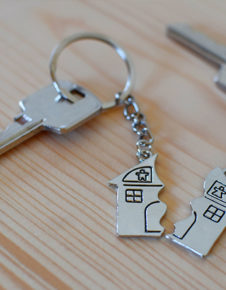During your training contract with B P Collins, you will ideally have four seats lasting five months each, and a fifth qualification seat lasting for the remainder of your training contract. The qualification seat is for you to return to the department in which you wish to qualify to provide you with an opportunity to really hone in one and develop your skills that you would have developed during your first time in the department.
Each time you change seat, it can feel as though you are starting a new job and the changeover period always comes around extremely quickly. Whilst you are within the same firm, the work that you are doing, the people you are working with and the clients you are working for can all change overnight! It can be challenging dealing with so much change and having to move department just as you are starting to get to grips with your current one, but the experiences you gain from it far outweigh the challenges.

So, how does it work in practice?
Prior to starting your training contract at B P Collins, you will be given the opportunity to give HR two seat preferences. HR work tirelessly to ensure that each trainee will have a seat in their departments of choice at some point during their training contract. These two seat preferences, combined with the mandatory Property seat, will make up three out of four of your main seats. Of course, if you have changed in your preferences, HR are always open to discussing this with you throughout your training contract. It is important to be honest and open with them.
A few weeks before the end of your seat, a member of HR will catch up with you to confirm your next seat and the date on which you will change over. It is important that you communicate this to all members of your team so that you can help manage your workload in the lead up to your last day. If there are two trainees in your new seat, then you will find out who the other trainee is too.
“It is common for your next supervisor to contact you to introduce themselves – although the chances are you will already know them or at least recognise them from our open plan office in Gerrards Cross!”
Handover
Before your final day in your current seat, you will take part in two handovers:
(1) One which you will give to the incoming trainee for your current seat; and
(2) One which you will receive the outgoing trainee in your new seat.
Handovers are crucial to ensuring a smooth and successful transition into your new seat. A successful handover will give you an insight into the type of work that you will be doing, best practices for that department and highlight anything specific that you are required to do as a trainee in that seat. It is also a good opportunity to find out about non-legal related aspects to the department, for example who approves annual leave or how your supervisor likes to be sent work (i.e. paper or soft copy).
“During the handover, it is important for the outgoing trainee to inform the incoming trainee of any cases that they have had ongoing involvement with that the new trainee will need to take over.“
This is also a good opportunity to have a positive start in your new seat as you will be aware of what is going on and what you can do to help the solicitors straight away. A good handover is essential to a good start in a new seat.
Your last day in your seat
On your last day, and the days leading up to the same, it is important to:
(1) Complete all the work you have been given, and where that is not possible give the solicitor enough warning of this. This links with why you must let your team know when your last day is to help manage expectations and your capacity;
(2) Ensure that you have all your signed trainee diaries and upload them to the appropriate platform;
(3) Ensure that you have logged all your time;
(4) If appropriate, contact your clients to inform them that you are changing departments and introduce them to the new trainee/inform them who will be their point of contact in your absence.













